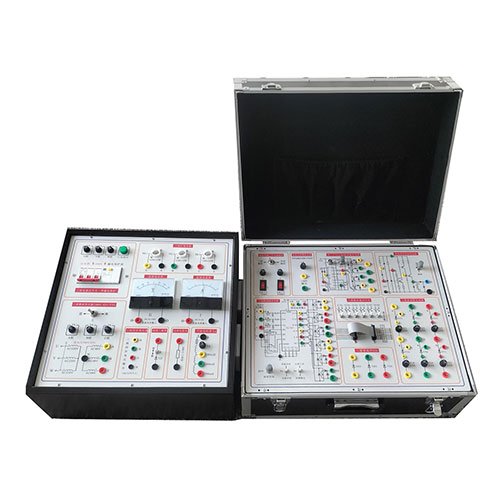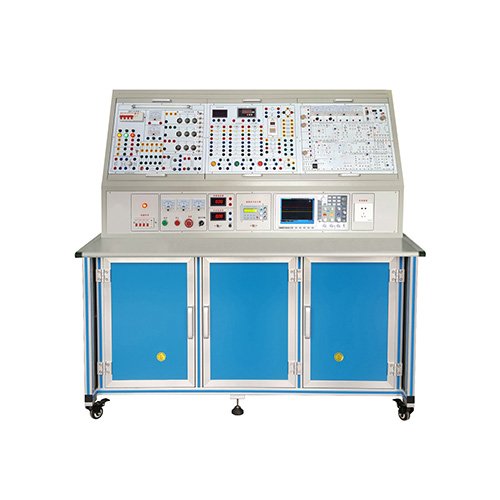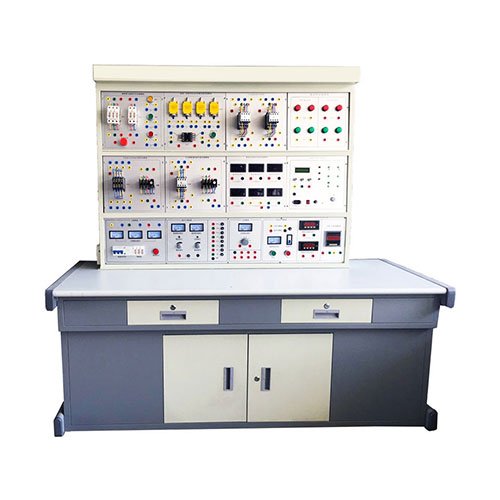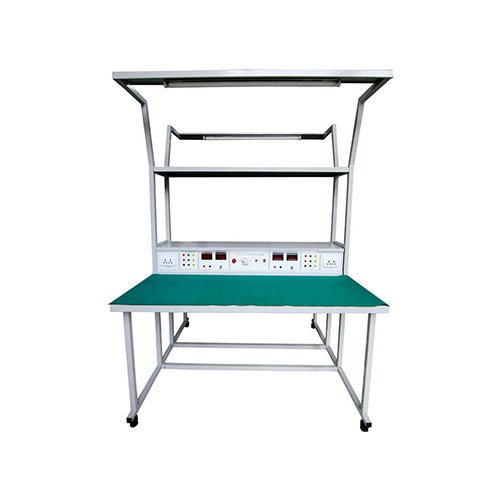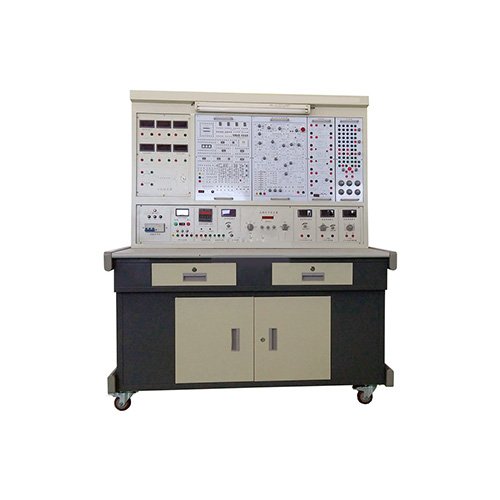- Automobile training equipment series
- Electrical and electronic teaching equipment
- Elevator training series
- Fitter training equipment
- Fluid mechanics experimental equipment
- Hydraulic and pneumatic test bench
- Mechanical teaching equipment
- Robotic automation and mechatronics series
- Welding training equipment
I. Equipment Features
(1) The power electronics experiment box adopts a combined structure, so it is compact, easy to use, fully functional, and has good comprehensive performance. It can complete the “Power Electronics Technology” single-phase and three-phase conversion technology experiments on a set of devices.
(2) The power electronics experiment box occupies a small area, saving laboratory land. There is no need to set up a power control panel, cable trench, cement pier, etc., which can reduce infrastructure investment; the experimental device only needs a three-phase five-wire power supply to be put into use, and the laboratory construction period is short and the effect is fast.
(3) The power electronics experiment box has a reasonable layout and beautiful appearance. The panel diagram is clear, clear, and intuitive; the experimental connection line uses a pistol-type plug with separate strong and weak currents. The two cannot be plugged into each other to avoid strong current connecting to weak current equipment and causing damage to the equipment; the circuit connection method is safe, reliable, fast, and simple.
(4) The three-phase power supply is equipped with leakage protection and grounding protection devices to effectively protect the operator’s personal safety and create the prerequisites for an open laboratory. (5) The component panel is divided into three types of wiring holes: strong current, weak current and waveform observation hole. The three are clearly distinguished and cannot be plugged into each other.
(6) The experimental circuit selection closely follows the changes in the textbook, fully complies with the teaching content, and meets the requirements of the syllabus.
II. Technical performance
(1) Input voltage Three-phase five-wire system 380V±10% 50±1Hz
(2) Working environment Ambient temperature range is -10~40℃, relative humidity ≤85% (25℃), altitude ≤4000m
(3) Device capacity: ≤0.5kVA
(4) External dimensions: length × width × height = 1000 mm × 400 mm × 220 mm
III. Equipment composition
The power electronics experiment box includes a power supply and load instrument box and a single-phase, three-phase trigger and main circuit experiment box. The power and load instrument box features a three-phase leakage protector as the main power switch. It also includes a three-phase rectifier transformer, a three-phase synchronous transformer, a three-phase light bulb load, a 300 ohm high-power resistor load, and smoothing reactors (0, 100mH, 200mH, and 700mH). Two single-phase 86-type power sockets are provided on the right side of the box to power an oscilloscope and a single- and three-phase triggering test box.
The single- and three-phase triggering and main circuit test box includes a six-way thyristor main circuit, three diode components, a BT33 unijunction transistor trigger circuit, a TC785 integrated trigger circuit, a three-phase integrated trigger circuit, and a power amplifier circuit.
It includes six 5A/1000V thyristors and three 5A/1000V diodes. Each thyristor is equipped with a protective device and can be triggered by an external signal (with a trigger pulse input interface), facilitating the completion of design experiments. A ±150V analog DC voltmeter is also included. One ±2A DC ammeter.
IV. Completable Experimental Projects
(1) Single-phase thyristor trigger (BT33 trigger) circuit experiment
(2) Single-phase thyristor trigger (TCA785 integrated trigger) circuit experiment
(3) Three-phase thyristor integrated trigger circuit experiment
(4) Single-phase half-wave controlled rectifier circuit experiment
(5) Single-phase bridge half-controlled rectifier circuit;
(6) Single-phase bridge full-controlled rectifier circuit experiment
(7) Three-phase half-wave controlled rectifier circuit experiment
(8) Three-phase bridge half-controlled rectifier circuit experiment
(9) Three-phase bridge full-controlled rectifier circuit experiment
(10) Single-phase AC voltage regulation circuit;
(11) Three-phase AC voltage regulation circuit.

